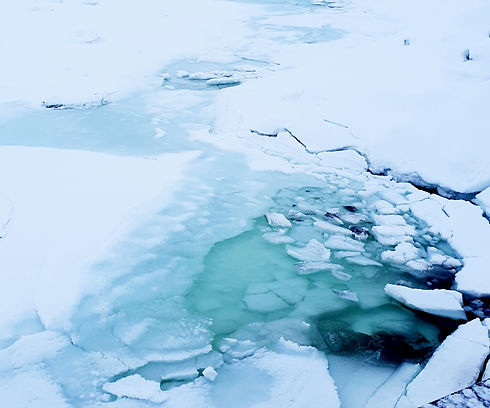
Q: What is your method that you will use to restore and preserve Arctic sea ice?
A: Our method is intended to achieve ‘biomimicry’ by encouraging the natural process of sea ice generation in ambient temperatures that allow for the thickening of the ice. We can achieve this by pumping seawater from below the ice to the surface during the winter months whilst also encouraging snow cover at the end of Winter to insulate the ice during the summer months to enable it to last to the following Winter.
How does it Work?
Real Ice is seeking to utilise technology already in-use today to reduce the time needed to implement a renewable powered solution to Arctic sea ice melt. There are water pumps already in use today to generate ice for a variety of recreational and commercial purposes (such as platforms for oil rigs, ice pathways in Arctic regions & public ice rinks), although these are diesel powered.
By increasing the thickness of the ice we also increase the surface albedo level (Reflectivity) which allows for more reflection of solar radiation or 'cooling' during the summer months. If we can bring the level of the sea ice to above a minimum, we can expect the sea ice to remain through the summer months to the following winter.

The innovation brought forward by Real Ice is in the combination of pumping technology, already used by many today, with the advancements made in the renewables and clean energy sector. We are using this to create a system that can be run solely from renewable energy sources and our primary challenge is to demonstrate the capability to scale this methodology. By doing this, we will encourage governments, large industrial partners and local communities to join us in shaping the way that this could benefit all life in the Arctic.
How will it operate?
The system for deployment and operation is still under development and therefore the 'Aquafreezing' approach we have presented is still liable to change as we further research the technique needed to restore and preserve Arctic sea ice.
As we have explained in our 'Science' section, our method for re-icing would be achieved by pumping sea water on top of existing ice, during the winter season, to accelerate the thickening of ice. Water pumps would be zero-emission and would be fuelled by renewable energy. We call this method AquaFreezing.
